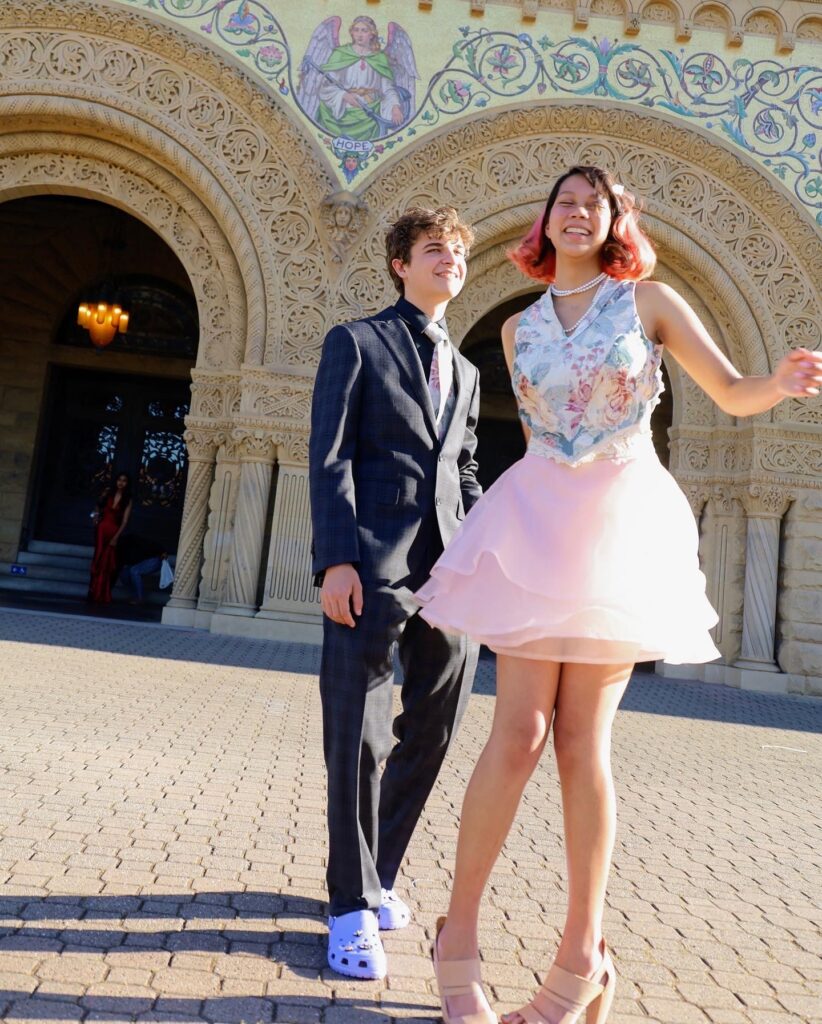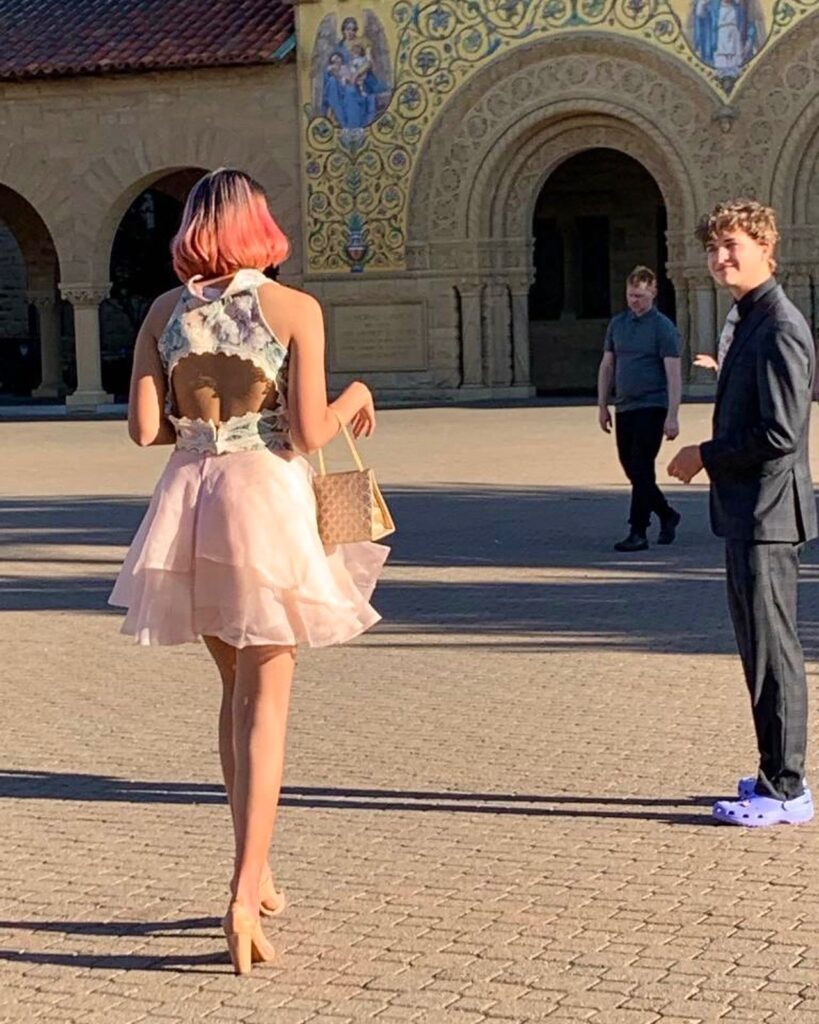Portfolio
Introduction
Hi, I’m August! Welcome to my showcase. I’m a design student at Freestyle Academy with a focus on fashion and graphic design. I plan to continue these passions as I join the Department of Design and Media Arts at UCLA. Outside of Freestyle, I’m Assistant Section Leader for MV Winter Percussion. I also enjoy sewing garments and listening to new types of music.
Digital Portrait
For the “Pastel Painting” assignment in class, I decided to paint a portrait of my boyfriend. The concept of the assignment was to create an entire digital painting using only the pastel brush. This was my first time digitally painting ever, and I was extremely inexperienced with Adobe Photoshop. I’m proud to say that I mastered this steep learning curve. However, this assignment was also my first brush with the specific type of perfectionism that digital art breeds. My primary Adobe product, Illustrator, is extremely flexible, but I found that raster images are much more flimsy to work with. The permanence of strokes that layer on one another combined with the ability to undo and redo any detail was an immense amount of power and pressure for one artist. I experimented with a variety of techniques and textures in this portrait, using variants of the pastel brush. The overall effect is fun, but I’m interested in hearing how I could have communicated my subject better.
Specific details such as the spots in his sheer top, the lettering in his bucket hat, and the texture of his clothes are all points of pride. I regret having blended his skin, but admit that I also would have regretted not at least trying it out. In a sense parallel to perfectionism, I also struggled with deciding which techniques were true to the spirit of the assignment and when to sacrifice beauty for honesty. The expanse of decisions that could lead to a final product was overwhelming and ultimately distracted me from reaching my final goal on time. While I could, of course, always use feedback on my painting technique and enjoy advancing technically, advice on time management in a professional setting would also be very much appreciated.
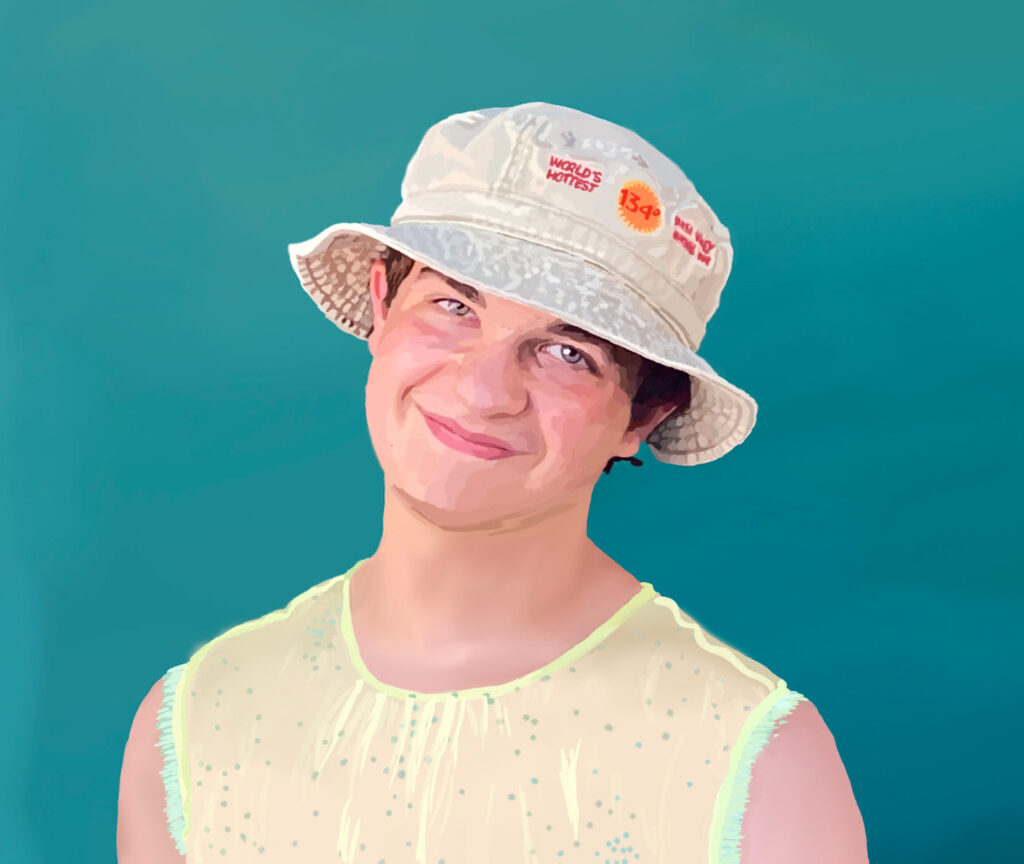
Surreal Photoshop Composition
My original concept for this project was going to be about pressures imposed on women to consume less and take up less space, but the image of the woman eating rocks, once I had photoshopped it, tickled me a lot. So I put her in a graveyard with a bunch of other hooligans, just doing what they seem to enjoy. The message is more about self-acceptance now, while you can still mingle above the earth (as opposed to below it).
Layer masks and clipping masks in Photoshop were my saviors for this project. Being able to go in with a brush and work with every detail of the images I was layering made me feel more connected to the work, and by the end of this project, I could plop an image on there very quickly and naturally.
The line between surreal and realistic is something very tricky and nuanced to work with, but I think I achieved my goal in that at first glance, there is nothing wrong with this image. Obviously, rocks aren’t something most people consume regularly. But some people live solely on iced coffee, too.
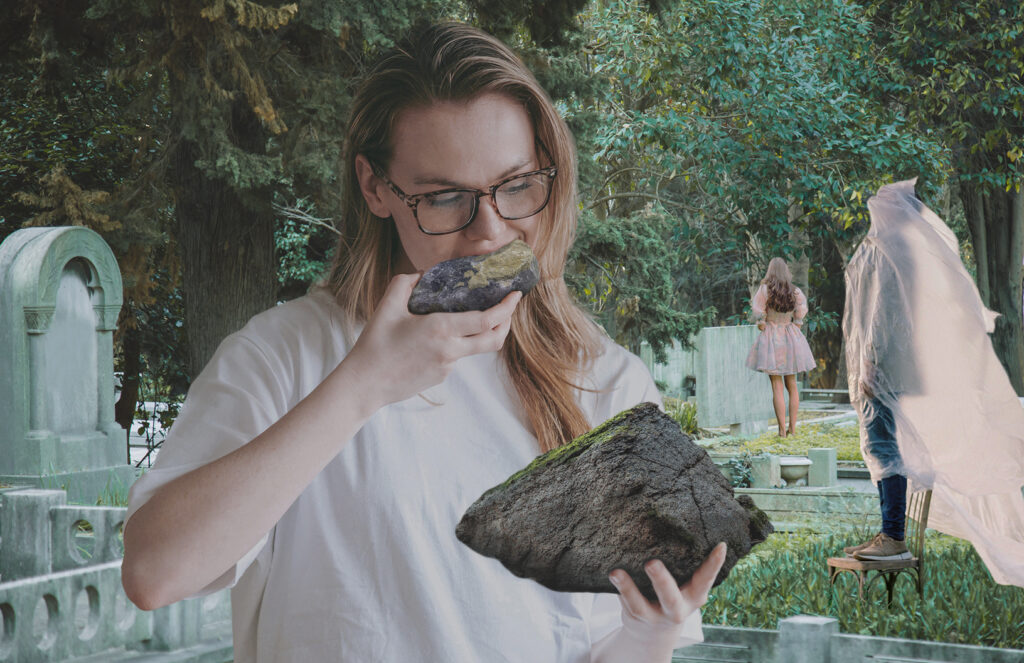
T-Shirt
This project was completed outside of Freestyle for my Winter Percussion group. It’s an annual tradition to have a different shirt each year to represent the show. I was tasked with creating a design for “The River.”
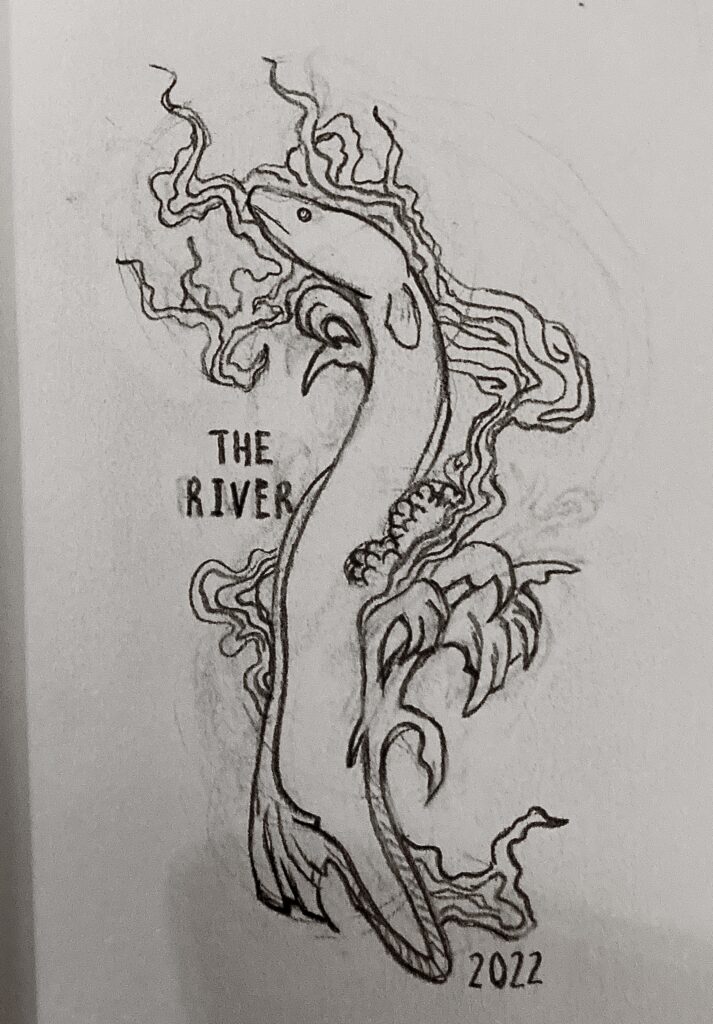
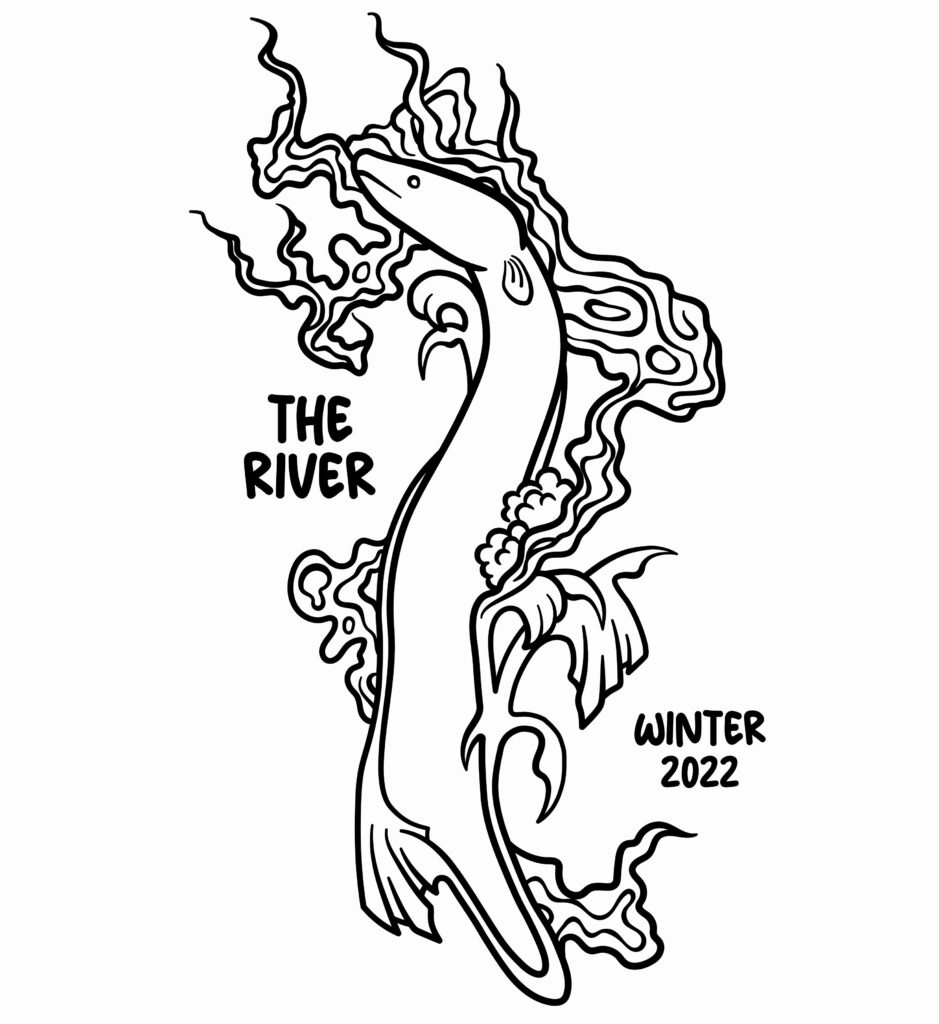

My design was inspired by Takato Yamamoto. In designing merchandise for a show called “The River,” Yamamoto immediately came to mind because his work portrays movement and fluidity through organic shapes and lines. In analyzing his work, I noticed that it was typically composed of a subject (often a person or animal) and what I came to think of as a “garnish” (the clouds and shapes surrounding it and giving it movement). I therefore used the garnish in my own work to enhance the movement of the subject.
![Serenade'' by Takato Yamamoto [1455 x 1000] - The best designs and art from the internet](https://i.redd.it/rxw0nj159s101.jpg)
In researching for this project, I also found it important to understand the eel itself. In my portrayal of the eel, I looked to its natural state first, then took liberties with artistic design and simplification.
The printing process proved to be the most time consuming and taxing aspect. Because of costs to print a variety of colors and shapes, I was forced to sacrifice the eel’s spots. It was extremely difficult to come to this decision because I wanted shadows throughout the piece, but the eel’s spots are significant to its character. However, I decided that the spots are the least noticeable out of the details, and opted to remove them from the design for printing.
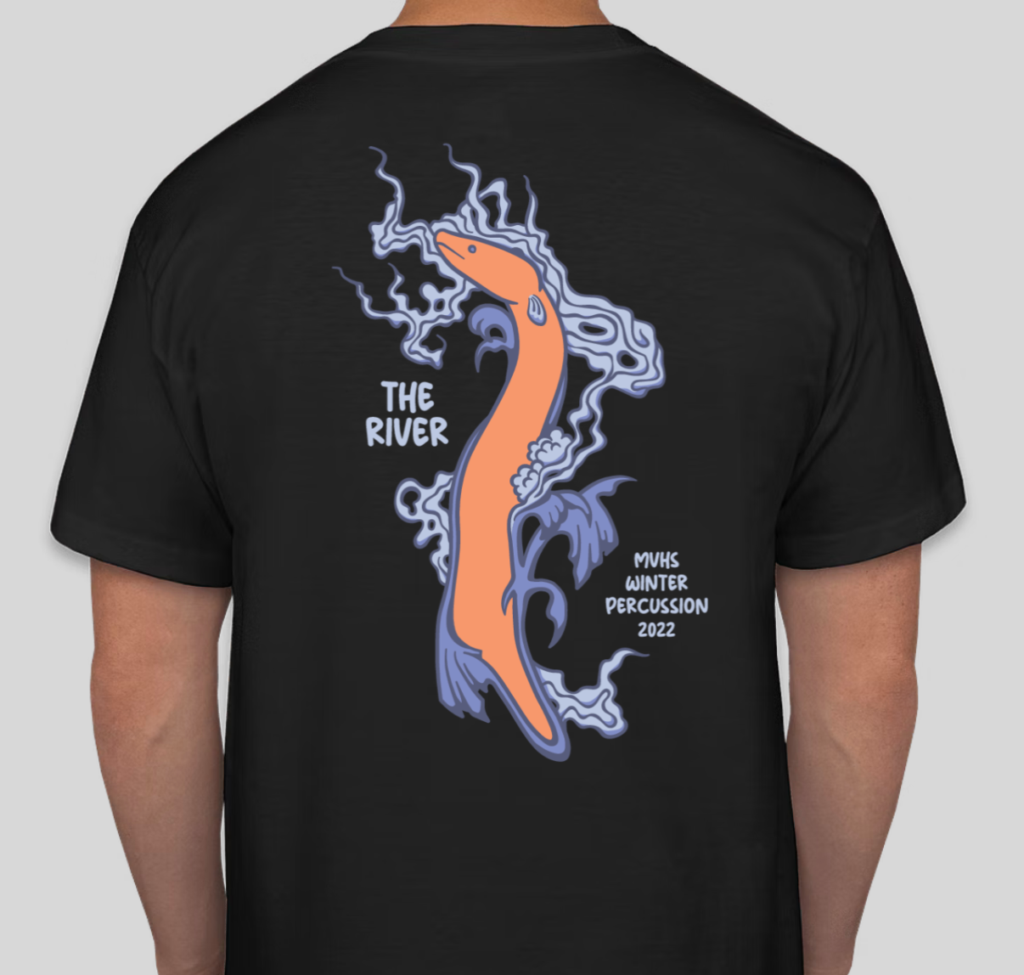
Multilayer Art
The Layered Art project relied on three-dimensional thinking in order to produce art comprised of many layers. I chose my subject to be the bee because I’ve always appreciated its different textures. as a kid, I had a microscope with different slides and samples. The bee was my favorite because of its glossy wings and fuzzy body. I created a lightbox because I find the light and layered paper to better represent the texture of the bee as well.
I then transferred my ideas into Adobe Illustrator using the pen tool and created different layers for the cutting laser to follow. Each of these layers added something new to the bee. The attention to detail this bee demanded was very time-consuming because of the tiny zig-zags of different lengths and widths depending on the part of the bee. The wings were the most fun to create because of their organic nature.
Mr. Flo printed the layers, which I assembled in order. Once the layers were all glued together, I put them in a wooden frame and added LED lights which are controlled by an app.
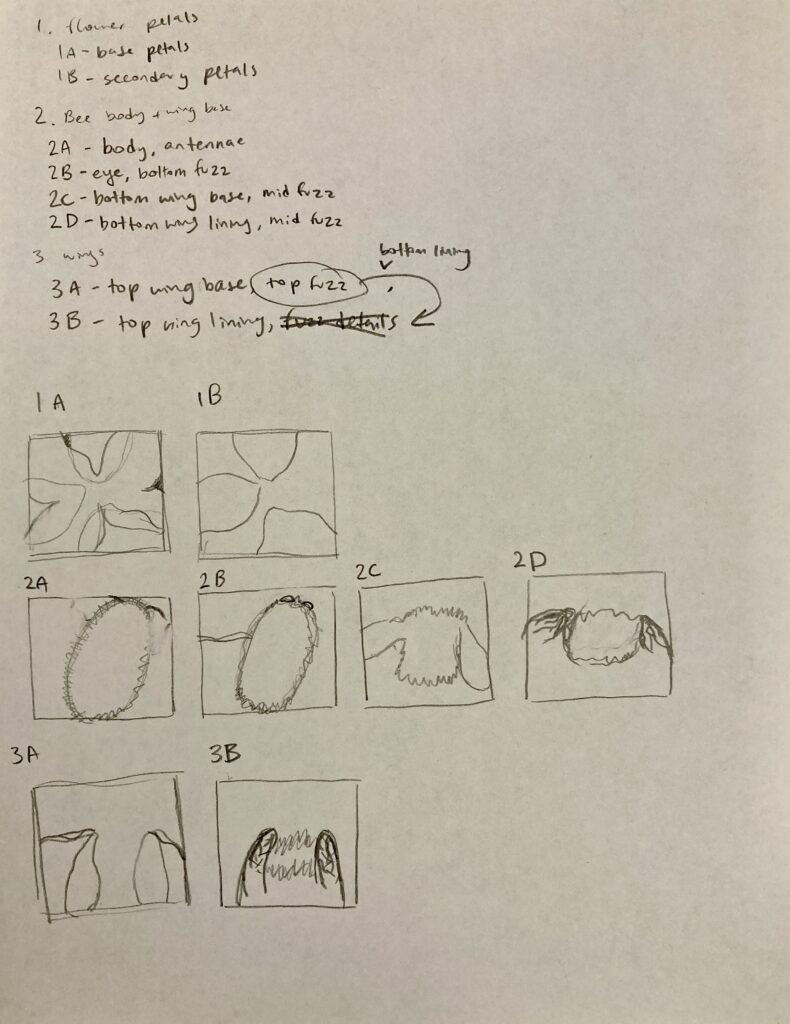
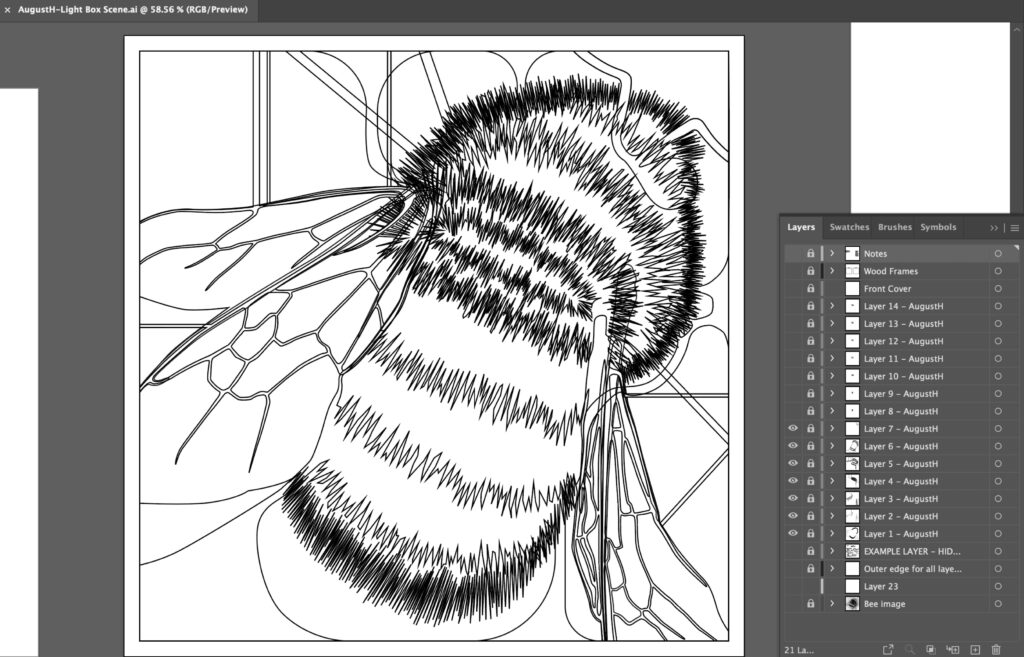

Podcast
I decided to do this podcast because it seemed like an exciting topic. Because I’m both Indian and Chinese, I’ve often felt caught between cultures. I wanted to explore my Chinese side more deeply, especially since our trip to China and Japan was canceled due to the pandemic.
Uncle Tom was eager to be recorded. He enjoyed feeling like the main character and sharing his story, but the pressure to tell it “correctly” and meaningfully was overwhelming. Because of this, I formatted the story as a thesis instead of a narrative. Additionally, the time limit on the podcast was difficult to deal with. Fitting three hours of conversation into 8 minutes didn’t seem feasible, so I chose conversation that revolved around a very specific theme. It still went over the limit by a minute, but it wasn’t too dense, especially with the music break.
Here is the final product, available through SoundCloud:
Overall, this podcast was a great experience in learning more about my family. My mom continues to play the podcast for any family members she can find. It was definitely interesting to learn about how podcasts are made and to try to emulate them myself. I don’t consume a lot of podcasts, so it was challenging because I didn’t have a lot of experience with what a podcast should be. However, I do think I produced meaningful work I can be proud of.
Zenith
This Zenith Project wasn’t really about recreating a dress, but rather a feeling. I was chasing the satisfaction of wearing something that reflected my personality and creativity. In the many hours I’d spent window shopping for prom dresses online, I felt unsatisfied with the bleak choices. Most dresses within a reasonable price range seemed mass produced and unflattering, while the dresses I admired weren’t within my budget. I knew that if I made my own dress, it would be relatively easy to stand out from the crowd. All I’d need was some thought put into it.
Making the dress also required a lot of risk taking because I wasn’t sure how the materials would affect the dress. I had never worked with organza before, so I didn’t realize how much it would fray at first. I also thought I’d need wire to support the form, but it turned out to be very stiff on its own. I bought plenty of materials halfway through because I hadn’t realized I would need them; fray check, a glue made specifically for fraying hems; a longer zipper because I could barely fit into the skirt with a seven-inch one; and some new thread, as I was starting to run out. The great part about sewing is that you can always take it apart and try again.
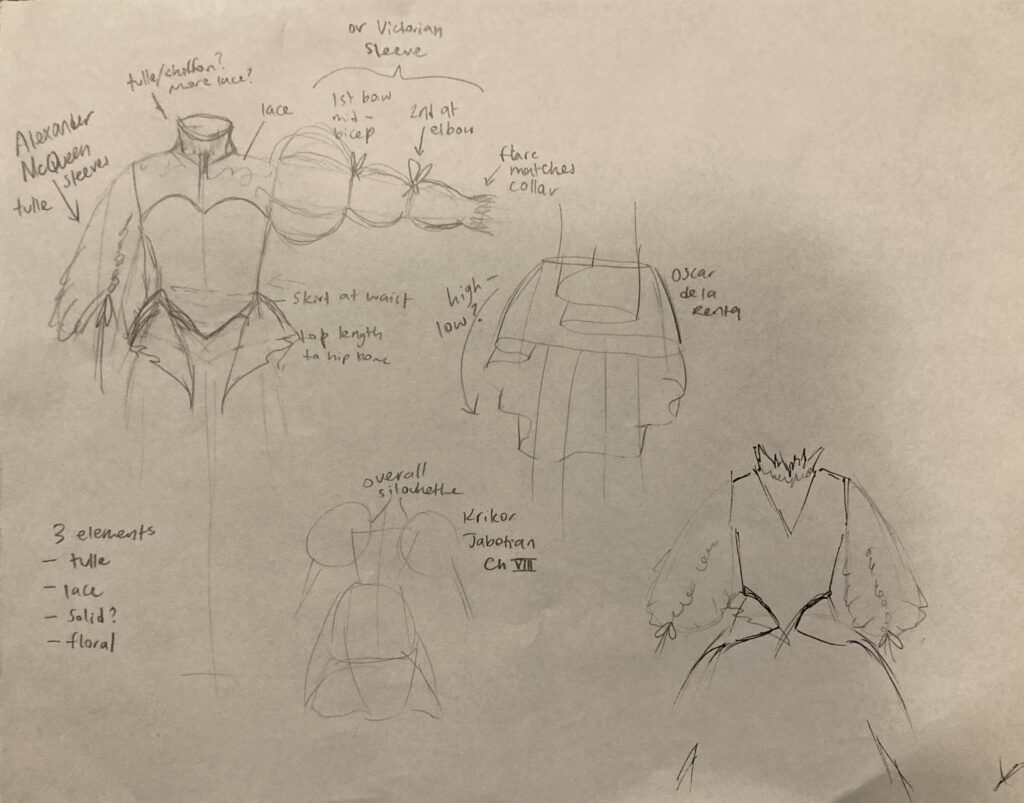
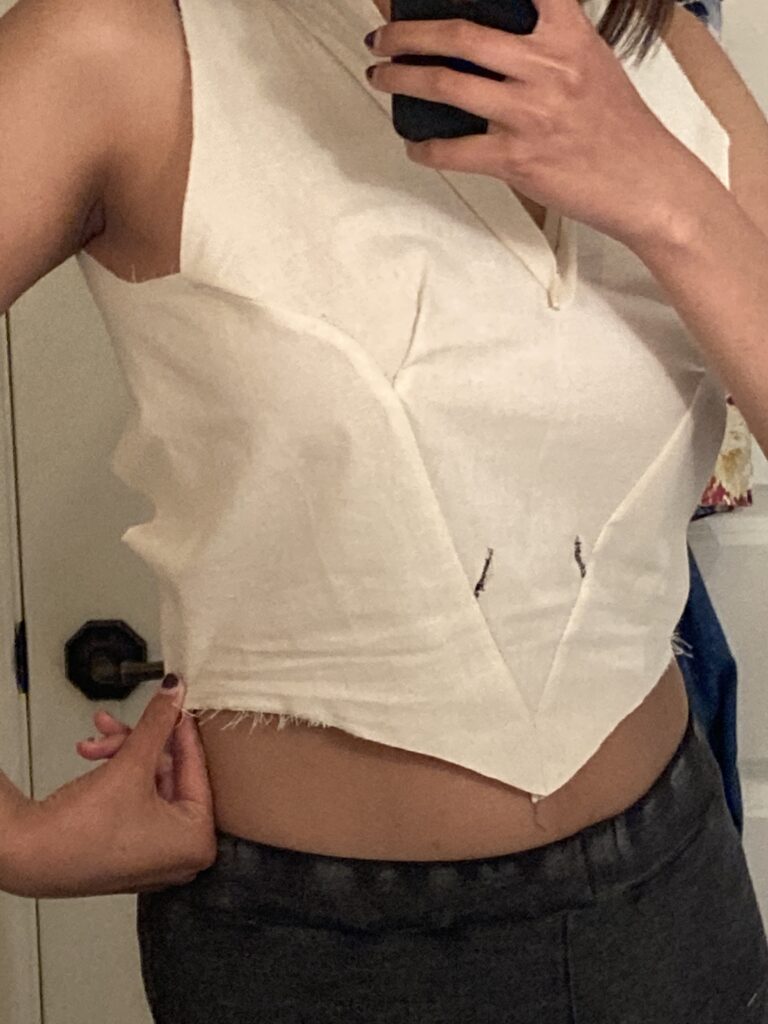
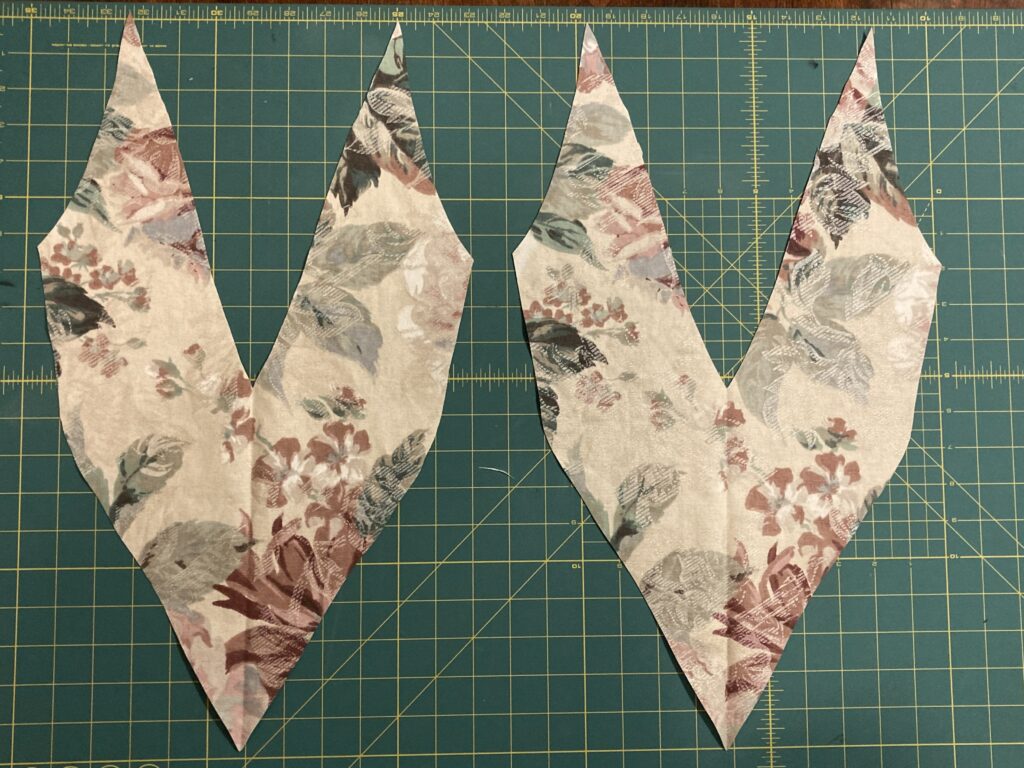
The final product, though, was so worth it. I had produced a two piece dress with a corset style, floral patterns and lace details. The open back was gorgeous and I was so happy with how flattering and beautiful it was. The junior presentation, and also because I was so happy to get artistic feedback and plenty of compliments.This Freestyle project ultimately achieved what it was meant to do. It helped me to gain confidence in my ability to sew garments and finish projects on tight schedules. Fittingly, it was definitely the pinnacle of my Freestyle experience.
